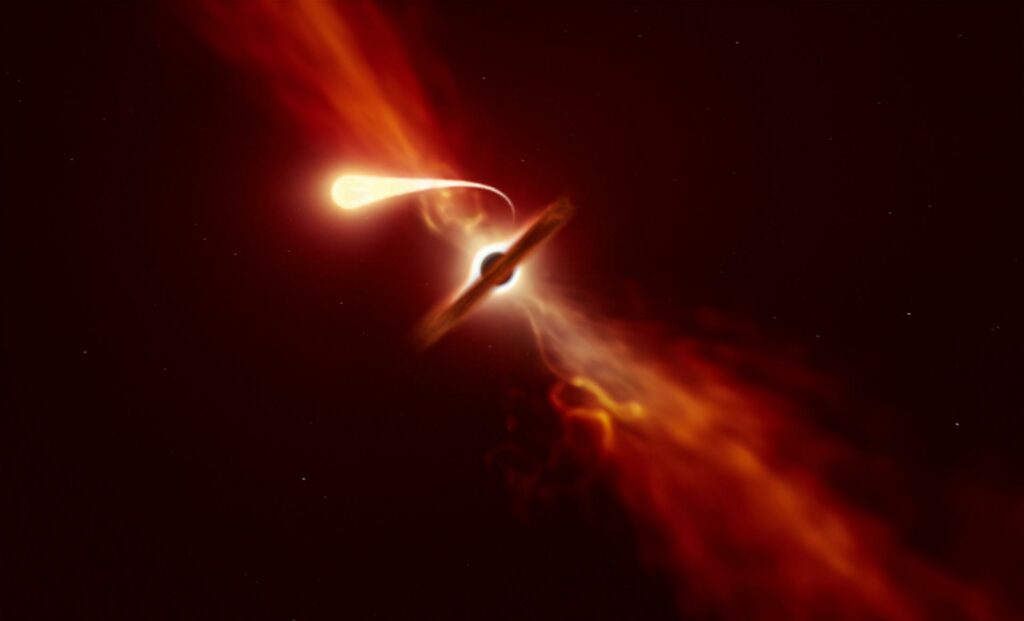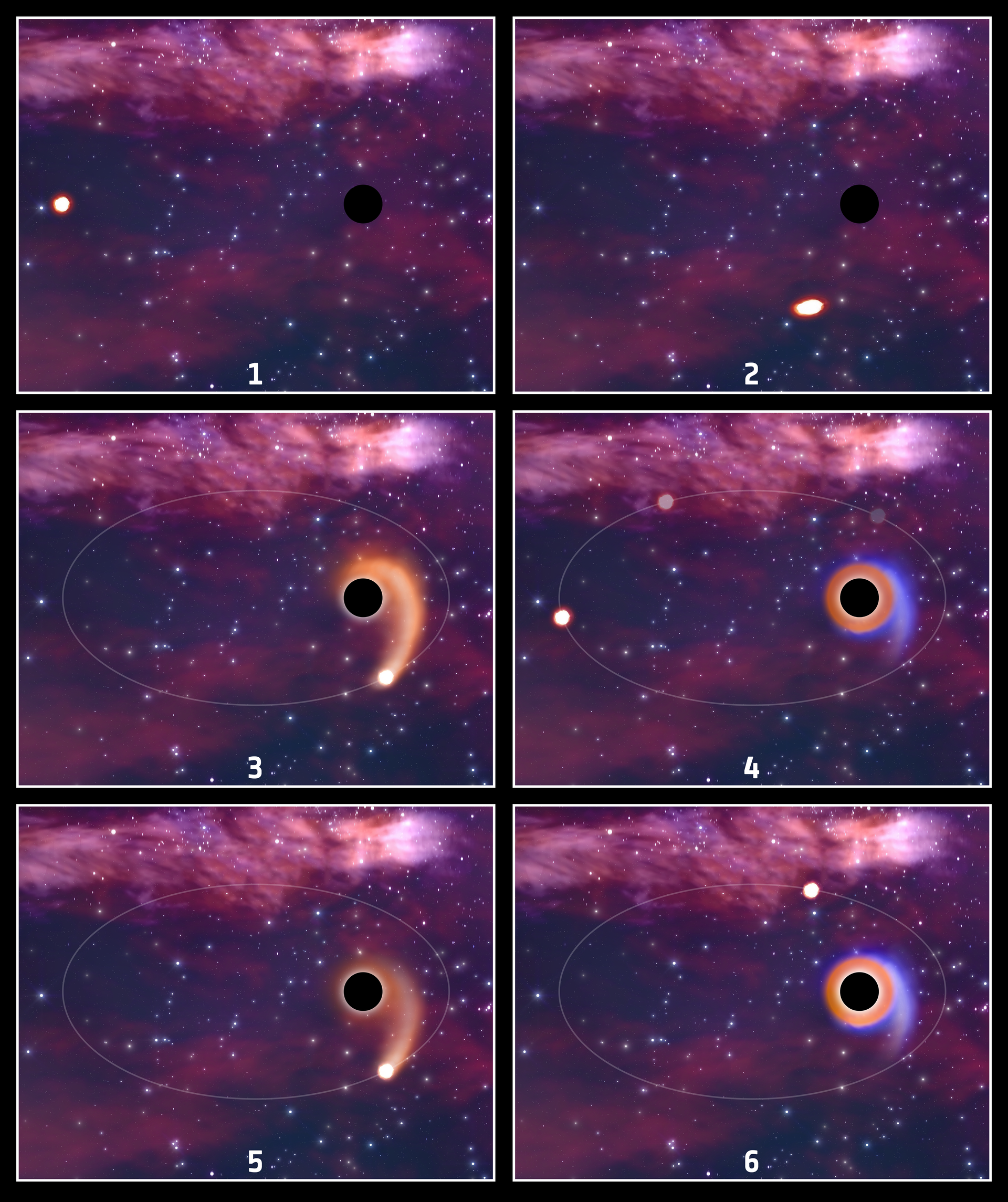While studying the data collected by the XMM-Newton Space Telescope, two teams of astronomers discovered repeated flares of light from black holes that were considered inactive. According to the researchers, they caught them in the process of regularly eating stars.
Tidal disruption events
Most large galaxies are home to supermassive black holes. Some of them actively absorb matter from the surrounding accretion disks and are relatively easy to detect. Other black holes are at rest and therefore invisible to astronomers.

But sometimes “dormant” black holes can still give themselves away. For example, to break a star that came too close to them. Such cases are called tidal disruption events. They are accompanied by the release of a large amount of energy, which can be recorded in all ranges of the electromagnetic spectrum and usually last several months.
Until recently, it was believed that the events of tidal destruction were always accompanied by the complete destruction of the star. But the data collected by two independent teams of astronomers indicate that in some cases part of the luminary may survive. At least for a while.
Black Hole Lunch Menu
In 2021, researchers discovered a tidal disruption event, designated eRASSt J045650.3-203750. Its source was in a galaxy located at a distance of 900 million light-years from Earth. During the subsequent observations using the XMM-Newton telescope, astronomers were surprised to find that the event repeats with an interval of 223 days.

Another event of repeated tidal destruction occurred in a galaxy located at a distance of 1 billion light-years from Earth. It was recorded for the first time in 2018, and for the second time in May 2022.
According to the researchers, the phenomenon of repeated tidal destruction was explained by the fact that black holes did not eat the entire star at one time. Some parts of the luminary survived and continued to orbit around the gravitational monster. Every time it comes close to the black hole again, it “bites off” a new fragment. This will continue until the star is completely torn apart and absorbed.
Recall that astronomers recently found a record-close pair of supermassive black holes.
According to https://www.esa.int
Follow us on Twitter to get the most interesting space news in time
https://twitter.com/ust_magazine

